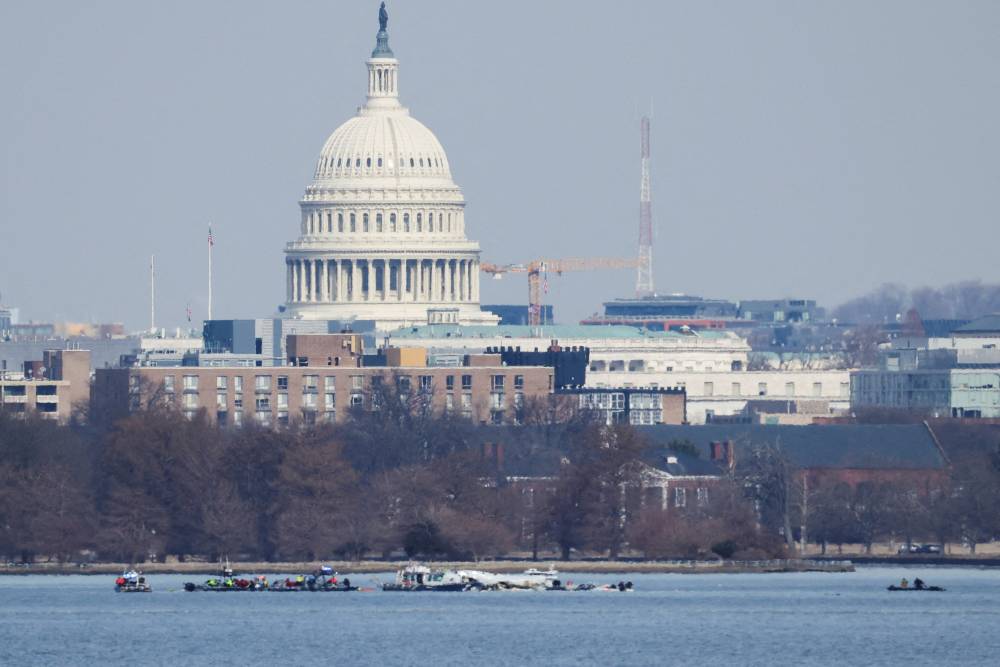Washington airport has worried pilots well before fatal crash

US commercial pilot Rick Redfern was preparing to land at Reagan Washington National Airport about a decade ago when he spotted a bright red Coast Guard helicopter hovering about 15 m above the Potomac River.
Air traffic control promptly warned the helicopter pilot to stay clear, and Redfern said he used evasive maneuvers to avoid it and avert a potential disaster – and that was in daytime, when visibility was clearer.
At night “the light can disorient you as to what you might think you are seeing as to what you actually are seeing,” Redfern said.
A collision on Wednesday night between a Black Hawk military helicopter and an American Airlines subsidiary’s CRJ700 regional jet, which killed 67 people, has stirred haunting memories for Redfern and other pilots who have faced challenges landing at the Washington airport.
Planes approaching the airport must navigate a precise and narrow flight path to avoid restricted airspace around the nearby White House and Pentagon.
‘Very tight’
“That turn from the eastern side along the river to turn into runway 33 is very, very tight,” said Redfern, referring to the same airstrip the American Airlines jet was heading towards before colliding with the US military helicopter.
It is unclear what caused the crash, which is now under investigation by the US National Transportation Safety Board and the US Army.
Seven US pilots told Reuters the landing at Reagan airport is unique due to congested space, along with an inability to communicate directly with military aircraft, which operate on different radio frequencies.
Commercial aircraft use Very High Frequency (VHF) radios to communicate, while military aircraft operate on Ultra High Frequency (UHF) channels, making direct communication between them difficult. However, the control tower can communicate with both frequencies.
For pilots, it means traversing narrow airspace, since planes cannot cross the eastern shoreline of the Potomac River when approaching the airport that is also used regularly by the military for training, the aviators said.
The US Army Black Hawk helicopter involved in the collision was on a training flight and flying at an altitude of about 300 feet at the time of the crash, according to FlightRadar24 data.
TCAS
To avoid collisions with other aircraft, pilots rely on the Traffic Alert and Collision Avoidance System, better known as TCAS. When TCAS detects a dangerously close aircraft, it gives instructions to the pilots to avoid a collision, such as pull up or descend, turn left or turn right.
However, when an airplane is below about 1,100 feet, TCAS stops giving instructions to pilots.
“There just isn’t enough room below that to maneuver,” said aviation safety expert and former airline pilot John Nance.
A Reuters review of incidents at Reagan airport involving helicopters reveals pilots had been raising alarm about near-misses back to the 1980s.
Out of 46 incidents flagged anonymously by pilots in the Aviation Safety Reporting System database, 26 cases involved near-misses or recklessly close contact.
In a report about an incident in September 1989, one pilot complained that military helicopters and commercial aircraft are on different radio frequencies, cannot hear each other and rely on “very busy” traffic controllers to prevent accidents.
The pilot complained it was his seventh near-miss with a helicopter in 4-1/2 years flying into the airport.
Reuters, the news and media division of Thomson Reuters, is the world’s largest multimedia news provider, reaching billions of people worldwide every day. Reuters provides business, financial, national and international news to professionals via desktop terminals, the world's media organizations, industry events and directly to consumers.

















